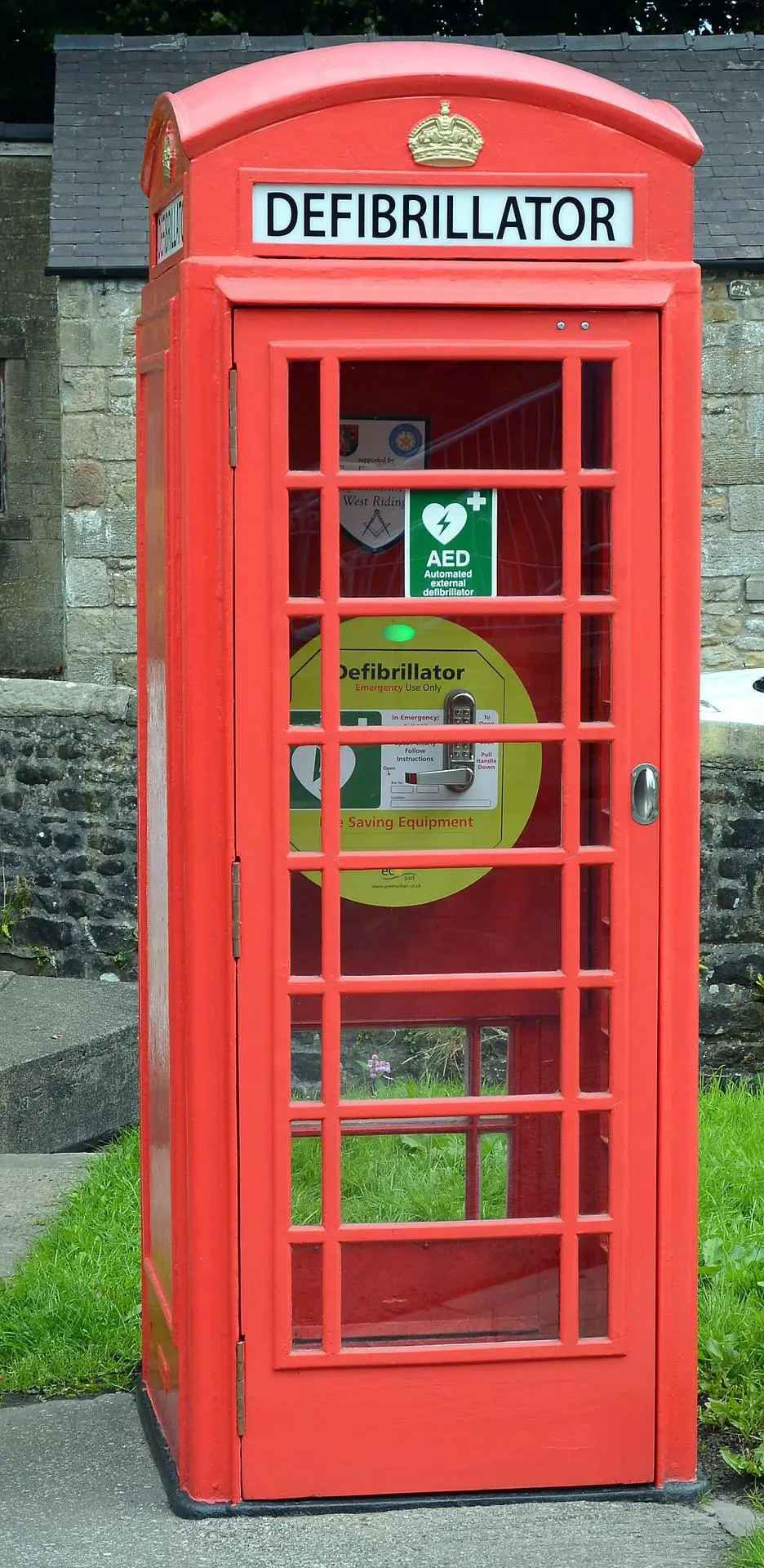Ordnance Survey supports the British Heart Foundation’s national database of defibrillators
1 Jul 2022 04:13 PM
Ordnance Survey (OS) has supported the British Heart Foundation (BHF) in ensuring that the national database of defibrillators used by the UK’s ambulance services has access to complete and accurate address data including unique property reference numbers (UPRN) and additional attributes to identify a property and locate it on a map with precision.
Known as The Circuit, the national defibrillators network maps and geo references defibrillators across the UK. The Circuit is designed to synchronise every 60 seconds with the live dispatch system of the ambulance services and provide them with the location of the nearest defibrillator in an emergency.
In some cases the use of a defibrillator before an ambulance arrives can be the difference between life and death. Sadly, this happens in too few cases and many opportunities to help save a life are missed. This is in part because the ambulance services do not know the location of the nearest defibrillator which is why having accurate data on the Circuit is so vital.
The East Midlands Ambulance Service supported the BHF in accessing the OS datasets by putting in place a Public Sector Geospatial Agreement (PSGA) contractor licence for BHF to use on their behalf. The use of the OS dataset within The Circuit is harmonious with existing OS mapping systems used by the emergency services.
To help people register defibrillators as quickly as possible, Unique Property Reference Numbers (UPRNs) are used. Sometimes there can be one defibrillator in an entire block of flats or there could be one on the outside of a large building, so traditional addressing methods were not conducive to finding them in emergency situations.
UPRNs are unique references given to address and non-address locations in the UK by local authorities, GeoPlace and OS, and the concept is similar to a car registration or a National Insurance number. They can be up to 12 digits in length and serve as a unique identifier for any location – a building, a bus stop, a post box, or in this case, a defibrillator.
The unique identifier helps reduce ambiguity in a location. Essentially, the UPRN ensures everyone refers to the correct location, even for an object that has no literal address. Like a car registration, the UPRN allows users to link other information and records, such as maintenance information and date of usage.

An example of a defibrillator with no literal address
The PSGA contractor licence, issued on behalf of the ambulance trust, meant BHF and their technology partner had free access to a range of OS datasets, including AddressBase. The detailed addressing database is updated weekly, and is the most comprehensive address data available, with over 39 million addresses and UPRN property level coordinates.
OS and GeoPlace acted as a trusted advisor to BHF, helping them to confidently understand the best way to embed UPRNs into their service. This helped their project achieve its goals and enabled them to get the best from the UPRNs and geospatial data.
John Kimmance, Managing Director of National Mapping Services at OS, recently said:
“We are humbled to support a critical, national service that can make a difference between life and death.
“Our authoritative data and expert support have allowed BHF to create more than just a map. This is an intelligent database underpinned by a highly accurate addressing referencing system that allows the ambulance service to identify tens of thousands of defibrillators instantly.
“We have a long and proud history of supporting the emergency services with OS data through the PSGA agreement and this further illustrates the importance of PSGA data sharing rights.”
Neil Spencer, Emergency Operations Centre Manager at East Midlands Ambulance Service, recently said:
“When we receive a call for someone who has stopped breathing, an ambulance is dispatched immediately and at the same time our 999 Emergency Medical Dispatchers (EMDs) will advise the caller how to perform CPR.
“Making use of technology means our EMDs can see the location and availability of nearby defibrillators and if there is someone available at the scene, our EMD will provide directions to collect the defibrillator.
“Working with the BHF and their partners and making use of the PSGA data sharing rights means the Circuit address database matches exactly the address data we hold in our Computer Aided Dispatch (CAD) system ensuring the caller is directed to the right place without delay”.
Judy O’Sullivan, Director of Innovation in Health Programmes at the British Heart Foundation, recently said:
“The Circuit is a vital tool in our fight to improve survival rates from out-of-hospital cardiac arrests. The support of Ordnance Survey in improving The Circuit has been invaluable, both as a trusted and reliable data source and utilising their expertise in mapping.
“But much more needs to be done. Less than 5% of out-of-hospital-cardiac arrests receive bystander defibrillation, and the survival rate is less than 10%. This in in part because there are still tens of thousands of defibrillators not known to ambulance services.
“Registering your defibrillator is simple and it could save a life, as well as being regularly checked and maintained. Join the fight to improve survival rates by registering your defib here: https://www.thecircuit.uk”